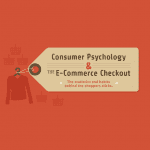
As competition intensifies, coming in all new shapes and sizes, global e-commerce organizations face challenges in differentiating their offerings with key audiences. To succeed, marketers cannot afford to miss opportunities to improve the effectiveness, reach, and return of their marketing and sales programs. Yet, a recent survey we conducted with 160 global retailers found the majority are missing out on significant opportunities to use tools that already exist in their arsenal to improve theROI of marketing campaigns.
According to the survey, online retailers are prioritizing their e-commerce platform, site search, and SEO, as well as mobile and customer-focused analytics. Still, nearly 60% admitted to not using site search reports and information to enhance marketing programs, and only 25% say they integrate site search data into email marketing campaigns to better customize offers for customers—implying there is still a great deal of value organizations can pursue, from integrating site search information to integrating their marketing campaigns.
Interestingly, half of the survey respondents said they are not doing more with site search to enhance marketing and sales programs due to limited resources, while nearly 30% say they just aren't sure how to do it and 10% note that their existing site search solution does not allow for integration with marketing programs.
Savvy online retailers reap rich benefits from site search
Every retailer knows site search is a must-have element of any online business—yet it's clear they're not taking full advantage of the rich benefits site search can provide to marketing and sales strategies. With the right approach, online retail marketers can glean valuable insights into visitor habits and buying behavior to help them deliver a richer user experience—which, in turn, can encourage a purchase.
Take, for example, gourmet candy maker Jelly Belly, which uses site search data to ensure that the appropriate top-searched keywords are incorporated into press releases, advertising, and marketing materials. Jelly Belly also uses site search merchandising capabilities to tune results and create landing pages for customized product groupings.
For a previous Cinco de Mayo promotion, Jelly Belly grouped various beans together to create “recipes†for tres leches cake and Mexican hot chocolate. The company then used the URLs of those dedicated landing pages for display advertising, retargeting, and email campaigns. Jelly Belly also dropped a banner tool onto the page to tie the promotional assets from the email or banner ad to the landing page. The result was an 85% increase in open rates for direct mail campaigns.
Site search improves decision making
You don't have to be a master at harnessing a large amount of data in order to make the important information work for you. Data gleaned from site search can be incredibly helpful in the decision making process.
According to our poll, half of retailers currently use site search data and analytics to enhance their business offerings or processes, while 28% use site search data to make smarter decisions related to inventory selection, 26% use site search data to enhance customer service, and 18% use it to augment predictive analytics practices.
The majority of retailers say they have not implemented site search features such as auto-complete with graphics (55%), mouse-over pop-ups (59%), personalized search history (64%), refinements (43%), or a floating search bar (80%). Most merely rely on site search features they have already, such as auto-complete (62%) and refinements (43%) to do the job—a significant miss for these retailers.
The good news is, nearly half (47%) of retailers plan to change their ways, and will work to incorporate more features, functionality, and data gleaned from site search to enhance marketing programs throughout 2014. As they do, there will be more effective ways to propagate information to their consumers, suppliers, and alliance partners that will lead to better online shopping experiences, brand-building opportunities, and revenue generation.

Tim Callan is the CMO of SLI Systems.

People have little interest in purchasing a bed; what they want is a good night's sleep.
Some folks would sleep on a cardboard box if it meant they’d wake up refreshed—that’s what makes it a real problem in need of a solution.
Entrepreneurs must go beyond simply building products; they have to sell what their product will allow customers to do.
If they don't, you know they’re inexperienced. Take a look at this quote from investor Dina Routhier:
The most common thing that pegs an entrepreneur as an amateur is when they come in and immediately start talking about their amazing new technology, and forget to start the discussion with, “What big problem in the market am I trying to solve?†If they don’t start with the problem, then I know they are green."
Let’s look at some examples of how benefits help sell products.
"Lose 30 Pounds in 30 Days!"

(Thanks, Mega Shake!)
As an armchair observer, it's all too easy to scoff at over-the-top late night infomercials. And yet, these ads are making sales, often far more than that super neat-o new web app everybody talks about but nobody wants to pay for.
In fact, the infomercial industry is still growing. It's even gone on to eclipse the TV industry itself:
Collectively, the U.S. market for infomercial products stood at $170 billion in 2009 and could exceed $250 billion by 2015. In fact, with the worth of the entire U.S. network and cable industry estimated at $97 billion as of 2013, DRTV [direct response television] is much bigger than TV itself.Why bring this up? If there is anything that infomercials are good at, it's selling benefits. For one, they understand that people can be coaxed, not driven.
Claude C. Hopkins once said, "Prevention is not a popular subject, however much it should be." It is far easier to sell around existing desires than it is to create desire.
Infomercials might all sound the same, but they work because they sell solutions that are perpetually in demand. It’s similar to how the most successful tech startups take a problem that already exists / has always existed, and make their solution easier, faster, cheaper, or more accessible.
There's also the effective use of selling a system. "30 pounds in 30 days" is appealing because you know what you're getting. Magic diet pills use this dishonestly, but with legitimate workout programs like P90X and Insanity, the language is the same. Nobody actually wants to buy a workout program, they want abs and better conditioning in a reasonable time-frame.
Â
What's In It For Me?
Let's step away from infomercials and observe the effectiveness of selling benefits in the "real" business world. This stuff works, sans sleaze.
Apple understood this when they released the first iPod. MP3 players were nothing new, and the technology trounced CDs. The problem was marketing; the right pitch hadn't been made to explain just how much better customers’ lives were going to be once they owned an iPod.
How do you think Apple decided to frame the magic of the iPod? Around its technical prowess, or what customers could do with it?
Â
The message was persuasive because, in the words of Seth Godin, it was all about "Me, me, me. My favorite person:Â me."Â Gigs of data have nothing to do with me, but a pocket full of my favorite songs certainly does.
The irony is that those who most often admire Apple and Jobs—those in the startup community—tend to have the biggest problem with selling. Many a HackerNews thread is filled with vitriolic commentors who insist that he who lists the most compelling technical features wins.
This has become such a problem that Justin Jackson recently wrote a very popular article reminding software developers that they aren't "normal" in relation to their customers:
Increasing the technical challenge while creating a product does not increase the chance for more sales. This surprises us. We get an idea for a thing, think about the technology we’d use to build it, and get excited.Â
“I could build this on the Twilio API!â€Â “I could learn that new CSS framework!â€Â “I could use this new tool I just purchased!â€Â
The problem is that all of this is focused on us, the creator, and not on the customer, the consumer.
There's a natural inclination for craftsman to want to talk about the craft.
But remember, customers generally won’t care about the cogs that make your product turn. What they want to know is, "What's in it for me?"
A Better Version of You

In a well-stated case for solution selling, Belle from Buffer argued that people don't buy products; they buy better versions of themselves. As Jason Fried noted:

"Here's what our product can do" and "Here's what you can do with our product" sound similar, but they are completely different approaches.
As with many aspects of marketing, it all comes back to having a compelling proposition of value. This is what many miss, and it’s why you'll see ill-informed comments like this crop up from time to time:
I'm one of those developers who thinks that marketing in general is 'scummy'... I'm willing to acknowledge that there can exist marketing that is not scummy but it's hard for me to think of real world examples... I love building things that people enjoy using but I hate sales and marketing."
Apparently, you're supposed to sit in your basement and build things without ever trying to sell them to the people who need them the most.
Bullshit!
Take a look at the homepage of a great company like Bidsketch:
It reads an awful lot like the "benefit selling" we've discussed throughout this article, but to my knowledge, you won't find founder Ruben Gamez on late night TV exclaiming, "But wait, there's more!"
Â
The “selling†here is beneficial to me as a customer: I find out what you provide and what I can do with it without being forced to slog through details I don't need.
As an example of what not to do, I once came across a SaaS app (that wasn't made for developers) that stated in their sub-heading, “Proudly made with Ruby on Rails.â€
“What's Ruby on Rails, a level from Mario Kart?†Ninety-nine percent of customers won't know and simply won't care. It’s like shoving the schematics in their face before they even have a chance to decide, "Is this what I need?"
Kudos to many bootstrapped companies, who tend to deeply understand the value of selling benefits (perhaps because they actually have to make money).
Freckle doesn't even mention the word "software" before you're reminded of your biggest problem when using time-tracking apps.
SerpIQÂ knows prospects will say yes to their question. Once the benefits are clear, they learn about how and why it's a faster and more accurate tool.
Â
Features Still Matter
Obviously, letting features "tell" still matters a great deal—once you've sold a prospect on what you can do for them, the details ease their decision-making.
Take buying a car; what you need is a car spacious and safe enough for your family, but when it comes down to a split decision, you might select the one with the heated leather seats. Until the benefits are obvious, stuff like this is just eye-candy.
Features can often connect the dots and put the benefits into a greater context. There are two important ways they do this:
- Justification:Â Esurance uses comparative pricing to explain why their insurance is cheaper (through features). The savings are gained from their lean operation, which was "born online." Once the benefit is sold, features are used to explain how you'll make it happen. If a hosting company says your site is totally secure (hooray!), features show you how and why that claim is a guarantee. Sell the benefits first, then highlight the great features you offer to close.
- Differentiation: Describing your point of difference means elaborating on your features. We often tell Help Scout customers about how most help desks outsource their email parsing. Ours is in-house, which allows us to do email integration and voicemail support that others can't do (only after the "help desk headache" issue is addressed does this feature become important).
My personal persuasion hero, Claude Hopkins, has a useful tactic on how to correctly frame features and benefits:
There is one simple and right way to answer many advertising questions. Ask yourself, “Would this help a salesman sell the goods? Would it help me sell them if I met the buyer in person?â€
Would you, making a sale in person, talk about the titanium frame or the nickel-cadmium alloy mix of your brake pads before addressing the benefits to a customer?
Â
Remember that by not selling on benefits, you're doing a disservice to customers. Give them what they want by showing them why your product is that "one thing" they've been searching for.
Last but certainly not least, be wary of selling "fake benefits," or completely hiding away your features, especially when appealing to a highly technical or business audience. Features matter, and are an essential complement to the solution selling that gets prospects interested in the first place.Written by Gregory Ciotti
Â
Pinterest is small in comparison to the top social networking sites like Facebook, Twitter and LinkedIn etc, but is turning in some impressive results when it comes to engaging and converting customers.
In this info graphic you will find not only some impressive statistics but also some helpful hints as to how to make your presence more effective on this site.
William Cosgrove

Consumer Psychology and The Ecommerce Checkout-Stats Behind the Clicks [Infographic]
Tags:What’s the secret to a successful E-commerce site? Is it graphics; ease of use; loading time. or something else, something harder to define?
As anyone who has ever attempted to find their place within the saturated E-commerce market will know, while traffic levels are indeed part of the battle to succeed; it is in fact a whole new challenge to convert that traffic into sales. Your products might be unique, crafted with quality and have an attractive price point for consumers; but it could be your website that lets your brand down leading, to lost sales.
Vouchercloud has collated the latest statistics and data within this new infographic demonstrating how consumers respond to various features within the checkout process and how they can lead to cart abandonment and lost sales.

Infografic Source:Â Vouchercloud
Tweet These Stats
- 57% of online shoppers will abandon a site after waiting 3s for page load, 80% won’t return Tweet this
- 92.6% of online shoppers say visuals are the top influential factor affecting a purchase decision Tweet this
- Offering multiple product views and alternate images leads to 58% more web sales Tweet this
- 57% of online shoppers have more confidence in purchasing a product after viewing product video Tweet this
- 52% of online shoppers say they are willing to stay longer on sites that use product videoTweet this
- 45% of online shoppers are more likely to return to a retailer who integrates video into the website experience Tweet this
- 85% of consumers read online reviews for local business before purchase, 79% trust them as much as a personal recommendation Tweet this
- 41% of online shoppers will abandon a checkout due to “sticker shockâ€Â Tweet this
- 29% of online shoppers will abandon checkout if asked to register (24% of ecommerce sites require reg)Â Tweet this
- Only 10% of online shoppers will abandon a checkout process they perceive as “too longâ€Tweet this
- 50% of ecommerce checkouts ask for the same information twice Tweet this
- 81% of online retailers pre-check newsletter opt-ins in registration (40% of consumers don’t want them) Tweet this
- 59% of consumers consider shipping costs when making online purchase decisions Tweet this
- More than 80% of consumers feel safer seeing logos of trustworthy payment options on a site Tweet this
- 40% of online shoppers say they have more confidence with sites that offer >1 payment option Tweet this
Mobile Devices Accounting For Almost One-Third of Online Conversations Across Major Verticles
Tags: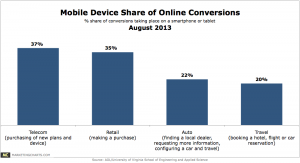 A study of 100 million “conversion events†across 4 major verticals (telecom, retail, auto, and travel) and multiple devices – including mobile phones, desktop computers, and tablets – reveals that 31% of said conversions took place on a mobile device. The study, conducted by AOL in conjunction with the University of Virginia School of Engineering and Applied Sciences (SEAS), also finds that 65% of mobile conversions took place on a tablet.
A study of 100 million “conversion events†across 4 major verticals (telecom, retail, auto, and travel) and multiple devices – including mobile phones, desktop computers, and tablets – reveals that 31% of said conversions took place on a mobile device. The study, conducted by AOL in conjunction with the University of Virginia School of Engineering and Applied Sciences (SEAS), also finds that 65% of mobile conversions took place on a tablet.While Android and iOS devices each accounted for roughly 50% share of smartphone conversions, the iPad was the dominant tablet device, at 85% of conversions.
The proportion of conversions taking place on a mobile device has grown by 28% over the past year, according to the researchers.
Telecom appears to be the most heavily influenced vertical of the 4, with 37% of new plan and device purchases coming from a mobile device. Next up was retail, with 35% of purchases occurring on a smartphone or tablet. Auto (22%; referring to finding a local dealer, requesting more information, configuring a car, and travel) and travel (20%; referring to booking a hotel, flight, or car reservation) were relatively less influenced.
Consumers are now spending one-quarter of their digital time at home on their tablets or mobile phones, according to the study, and three-quarters of the mobile ad impressions tracked were viewed inside the home. While the researchers note that this “runs counter to the prevailing wisdom†that most mobile device use occurs outside the home, that view has been debunked several times, as discussed here.
About the Data:Â The data is based on 500 billion impressions served by AOL Networks during portions of 2012 and 2013.
by MarketingCharts staff
DealerNet Services
Why Social Integration? The World Is Changing-Everything is connected
Tags: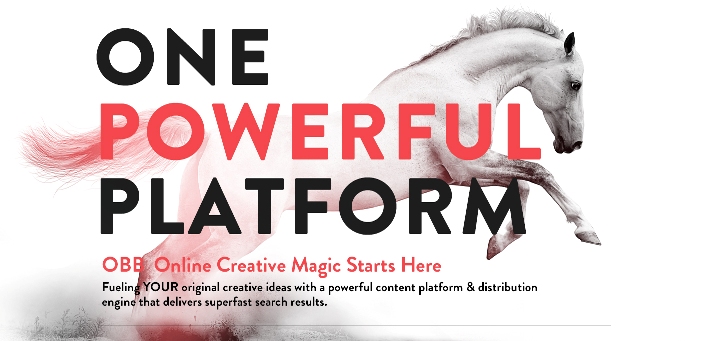 Everything IS Connected:Â
Everything IS Connected: The world is changing. Marketing is no longer defined by lip-service promotions. Instead consumers are flocking to the Internet, seeking information about their favorite brands and products. They want the immediacy of networking; they want the ease of web site posts; they want instant communication.Â
Â
And they’re willing to give their loyalties (as well as their dollars) to companies that offer these things through social integration.
Â
Â
It’s also connected to the way individuals shop.Â
Â
Consumers are now spending their time--and their money--online. They’re seeking out company web sites, utilizing social media as a way to learn and buy. It’s estimated that:
Â
71% of users rely on online information for all of their purchasing.
Â
79% of users seek out company social accounts (like Facebook or Twitter) to receive updates and incentives.
Â
81% of active social media users favor companies and products found in their networks.
Â
70% of active social media users do the majority of their shopping online.
Â
The statistics are startling--if only because they can no longer be ignored.Â
Â
Social integration is linked to consumer awareness. Companies that embrace networking, blogging and more become part of an ever-expanding circle of accounts. They are connected directly to the demographics they need, bringing traffic to their sites and sparking profits every quarter.
Â
A business that isn’t integrated is a business that’s losing money. One Big Broadcast helps to earn those dollars back.
 Social Integration: What One Big Broadcast OffersÂ
One Big Broadcast is a social media platform developed with propietary technology. It delivers complete social integration through techniques like:
Â
Scheduled Content
IMGY Galleries
Private Communities
Company Profiles
SEO-focused Blogging
And More
Â
The purpose of these tools is to fully embrace the power of social media. Relevant content is offered to networks and engines, dominating searches. Niche marketing, along with mobile options, attracts targeted audiences. A site is fully connected to the Internet... and that allows it to be fully connected to users.
Â
One Big Broadcast pushes brands to the forefront of social media, integrating them into the consciousness--and posting preferences--of consumers. Its cloud-powered console brings companies and clients together.Â
Â
And this is essential.
Â
Contact One Big Broadcast today to discover the media connection.
DealerNet Services
The Future Of Advertising: "Pay Per Gaze" Is Just The Beginning
Tags: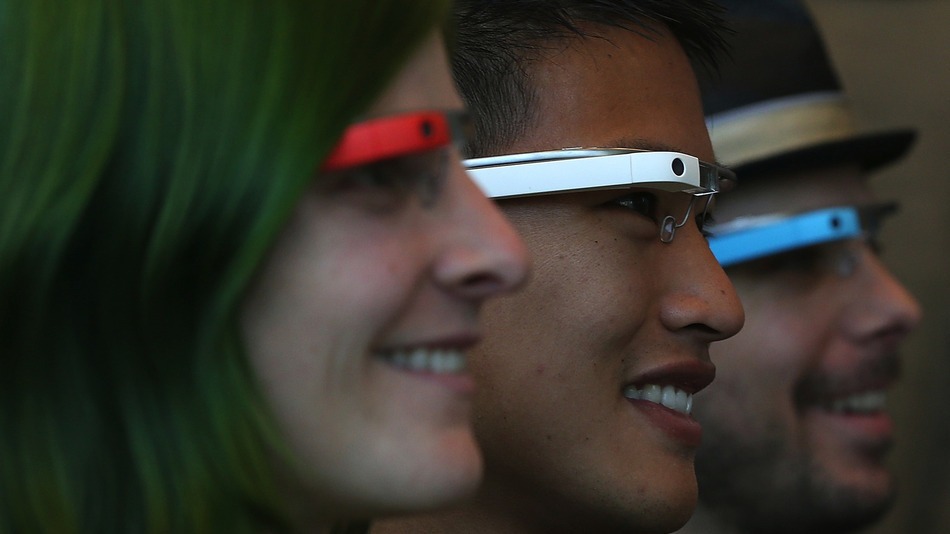 Advertising is going to change more in the next 20 years than it has in the last 100. If you need proof of that, just look at the patent Google was granted Thursday for a Google Glass-based ad system.
Advertising is going to change more in the next 20 years than it has in the last 100. If you need proof of that, just look at the patent Google was granted Thursday for a Google Glass-based ad system.Dubbed "pay-per-gaze," the content would charge advertisers for the number of times someone literally looked at their ad. The concept is buried pages deep in a patent for a "gaze tracking technique ... implemented with a head-mounted gaze-tracking device that communicates with a server."
SEE ALSO:Â New Patent Hints at 'Pay-Per-Gaze' Advertising for Google Glass
It would likely make money hand over fist, and is clearly the main future-focused impetus for the patent. But it's far from the only one.
What is this head-mounted gaze-tracking device of which they speak? "Eyeglasses including side-arms that engage ears of the user, a nose bridge that engages a nose of the user, and lenses through which the user views the external scenes, wherein the scene images are captured in real-time," says the patent. It never uses the word Google Glass — but if someone can explain to me the difference between that device description and Google Glass, I'd love to hear it.
So to recap: the world's largest search engine was just granted a patent for the most sticky form of advertising possible — ads that literally flash in front of your eyes. Google gets paid when it can ascertain that your pupils pointed in that direction, and for how long. And all of this on the device it is currently seeding among the influencers of the tech community.
In other words, Google Glass is going to bring a whole new meaning to "made you look."
Phase Two:Â Pay-Per-EmotionNow it's Google, so they're likely to be smart and subtle about it. It'll start by offering an extra layer of reality-augmented ads when you're looking at specific Glass-friendly billboards. Hey, it was obviously an ad, and you looked at it, so you must be interested.
You know advertisers will pay for this sort of high-tech gimmick as an add-on to their campaign; it's an easy way to look hip and gain media coverage without spending all that much on the test-bed target audience.
At this point, depending on the reaction to phase one, local advertisers may get interested. You may start to see menus pop up in restaurant windows, and the restaurant pays if your eyes linger over a given menu item.
Either way, this is all just a prelude to phase two, in which the Google Glass camera will intensify its gaze on you.
Phase two, as described in the patent, will be pay-per-emotion. If the ad can make your eyes dilate — say, a picture of a particularly delicious slice of pizza in a restaurant window, or a racy Gap ad — the advertiser pays more.
"Pupil dilation can be correlated with emotional states, (e.g., surprise, interest, etc.)," the patent helpfully reminds us. And it's simplicity itself for a camera that's tracking your gaze to track the size of the gazing subject's eyes.
The Far Future of AdvertisingThis is exactly the sort of thing that made William Gibson quit writing science fiction. We seem to be entering an era where tastemakers are willingly accepting augmented advertising that is flashed on their eyeballs by the world's most technically advanced multinational. That's more cyberpunk than most cyberpunk.
So let's get ahead of the game and speculate in even more outlandish sci-fi ways that are already technically feasible. If Google Glass advertising is smart and successful enough, if it gently overcomes the creepiness factor with the glories of convenience, what next?
Well, we already have prototype devices that can read and translate your electromagnetic brainwaves, believe it or not; you can literally think instructions to them. You can be as precise as thinking of a particular number or letter, and the device can read them; this was shown in experiments as early as 2000.
SEE ALSO:Â Are Brain Waves and Heartbeats the Future of Passwords? [VIDEO]
The first time I tried one, in 2009 — the Epoc by Emotiv — it was a helmet-sized thing with plastic tendrils plugged into a PC. Within two years, such prototypes were the size of a headband and worked with your smartphone; after all, they're just readers of electromagnetic activity. I have no doubt Google Glass version 3.0 could do this with spectacle frames pressed to your temples.
The ultimate implementation of this for advertising, marketing and sales? Here's what occurred to me 13 years ago when I first read about those mind-reading number-and-letter experiments:just wait until credit card companies get hold of this. You'll be thinking your account numbers at advertising in no time.
SEE ALSO:Â Brain-Scanning Headphones Match Songs to Your Mood
Think about it, no pun intended. If you were really hungry, really wanted that pizza, and could order it automatically by simply by looking at it and thinking your credit card number, why wouldn't you?
This is where we really go down the rabbit hole of the future. Because if you only have to think your number at a picture, do checkouts vanish? Does every store become an automat?
Will people want to carry hefty shopping bags, or simply look at displays to have whatever they like overnighted to their homes? Will the malls of the future start to look like art galleries?
Is there ever going to be a technological line beyond which advertising won't go? Leave your predictions in the comments.
By Chris Taylor
DealerNet Services
 So how smart is it for small businesses to invest in giveaways especially when their profits are already wafer thin and they’re struggling with their marketing strategies? The answer is of course yes! Giveaways are a worthwhile investment and go a long way in not only building better relationships with your existing customers but also comes in handy in making new clients.
So how smart is it for small businesses to invest in giveaways especially when their profits are already wafer thin and they’re struggling with their marketing strategies? The answer is of course yes! Giveaways are a worthwhile investment and go a long way in not only building better relationships with your existing customers but also comes in handy in making new clients.Almost all small businesses are heavily dependent on their returning customers which constitute their 80% sales. Following are some of the reasons which make free giveaways a worthwhile investment for small businesses.
Customer retention
Customer retention is of utmost importance for wholesale suppliers since their business largely depends on a few big clients. In an industry where clients are hard to come by, wholesale traders must do whatever it takes to retain their existing customers since, as mentioned earlier, they are their primary source of revenue. Giveaways go a long way in showing just how much you value your special customers. Customers too in return feel the obligation of staying committed in their dealings with you and do not look for other suppliers.
Building better relationships
There is no better way of building trust and developing stronger relationships with your customers than via free giveaways. They are the best possible way to appreciate your valued clients and show them just how much they mean to you. Giving presents as such is a good practice and should be a norm because it literally spells out just how much the customer means to the company.
Free marketing
Before you give anything away, you should make sure that all of your giveaways bear the logo of your company. Giveaways with company logos and trademarks offer long lasting, cheap marketing for both your business and your product as well.
If, as an example, you have given away a paperweight to your client, you can be sure that it would do more than just weigh papers down! A desk, office accessory that your client puts on his office table is there for everybody he meets, greets in his office. So in that sense, you are not only reaching out to your client only but also to those who are your client is reaching out to.
Because of these and many other reasons, I believe this season every small business must invest in free giveaways.
Written by Robert.
DealerNet Services
Social Media: The Most Economical Yet effective Marketing Tool
Tags: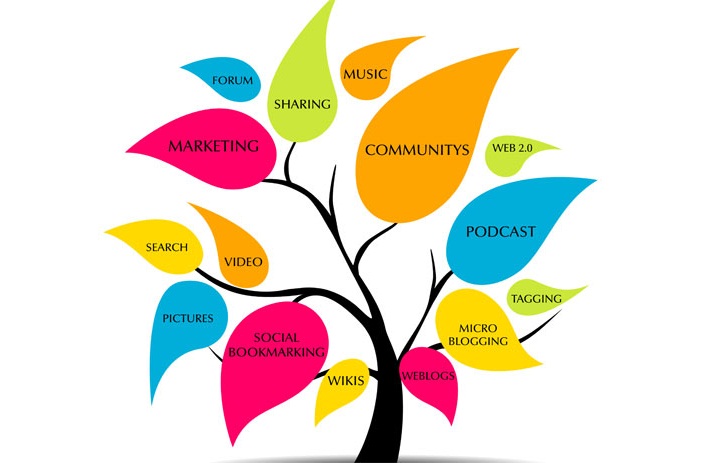 We all know that social media is huge today. People just can’t live without sharing what they feel or displaying what they wear. It’s all sociology from one perspective but it can also mean marketing to a few from another perspective. It is a common fact that where there is sugar there will be the bees. Similarly whenever there are huge concentrations of people, the marketer and advertisers are always there to make use of such situations and struggling to sell products or gain a good brand reputation.
We all know that social media is huge today. People just can’t live without sharing what they feel or displaying what they wear. It’s all sociology from one perspective but it can also mean marketing to a few from another perspective. It is a common fact that where there is sugar there will be the bees. Similarly whenever there are huge concentrations of people, the marketer and advertisers are always there to make use of such situations and struggling to sell products or gain a good brand reputation.Customer retention is by far the most effective way through which a business may gain prosperity and customer retention could only be possible when the people are repeatedly reminded of a brand or a shop or by simply infusing in them a desire to feel the need of anything which the company might be selling. With the advent of social media or to be more precise, when the social networking became the life of the people around the globe, viewership at a specific portal started increasing. Since all that a good TV channel needs is ratings to attract advertisers, here at social networking websites all was already set. People are frequently logging in and out of websites like Facebook, uploading pictures to get comments and statuses to tell their friends what they are going through.
The high concentration of people gathering around the social networking websites provides the traders with the cheapest form of marketing possible. The best part is that the add is displayed on various places and even if the user ignores the advertisement the people around the user may notice the availability of a new item at a some celebrated store and might hasten to buy it before someone else from the community buys. The desire to stand unique among the rest is experienced by everyone and it is this very desire which the traders may cash even when they are trading for wholesale products.
It is an open secret that nearly everyone uses Facebook, Twitter, LinkedIn, Instagram etc. these days. People even prefer to buy cell phones supporting applications which may lead them straight and in as less time as possible to their cyber wall where they post all their statuses or tweets or whatever they want to post. So naturally potential customers are always there looking for ways and means to get a better bargain in the market, searching for some better way to defeat that big competitor who usually gets all the customers due to his high quality yet economical products. Here is where the wholesale traders can actually seal a good deal and earn major profits if only they can post their advertisement, which is always facilitated by such websites.
Social media has by far, revolutionized marketing in every way imaginable. Advertising in now cheaper, effective and result oriented and many businesses are gaining the upper hand in the markets just by a little but careful investment on the social media. What people need to do is to concentrate on social media for advertising their products as compared to getting involved in other expensive, less effective means of advertising.
Written by Robert.
DealerNet Services
 Which do you think would be more interesting to your customers – that your dealership is #1 in sales or that your dealership has the largest inventory in the region?
Which do you think would be more interesting to your customers – that your dealership is #1 in sales or that your dealership has the largest inventory in the region?Here’s a hint: One is about you, the other is about the customer. One is inside-out thinking and the other is outside-in.
The differences between the two can be subtle, but simply put, inside-out thinking is when a company or brand talks about things the company cares about. Usually these are business-related topics like industry awards, marketshare growth, new logos, new hires, and so on – the kinds of things that make more sense in a press release than a newspaper circular.
Outside-in thinking is what your customers care about: added locations, extended hours, new inventory, easy financing, pick-up & drop-off services, if you’re first-time buyer friendly, and so on. Outside-in thinking means thinking outside of the box and looking at your vehicles from the buyer’s perspective.
Think of it this way, when you’re inside out, your mouth is moving. When you’re outside in, you’re listening.
Don’t misunderstand; of course you should present a professional and reputable business presence, especially when it comes to high-ticket, long-term purchases. In fact, a little inside-out thinking is good. However, there’s a time and a place for that – a mention will usually do. What you want is to make customers comfortable as early in the process as possible so you get a shot at their business. Outside-in thinking is the surefire way to draw potential buyers to your door.
So, when you’re branding your dealership, no matter if it’s a radio ad, website or even a vehicle description, approach your messaging from your customers’ point of view and use your “outside voice.â€
Posted by Anne-Marie Jeffrey
DealerNet Services
CALENDAR
CATEGORIES
TAGS
TWITTER POSTS
CALENDAR
- powered by
- One Big Broadcast
- creative by
- WebStager
© 2026 One Big Broadcast | All rights reserved

